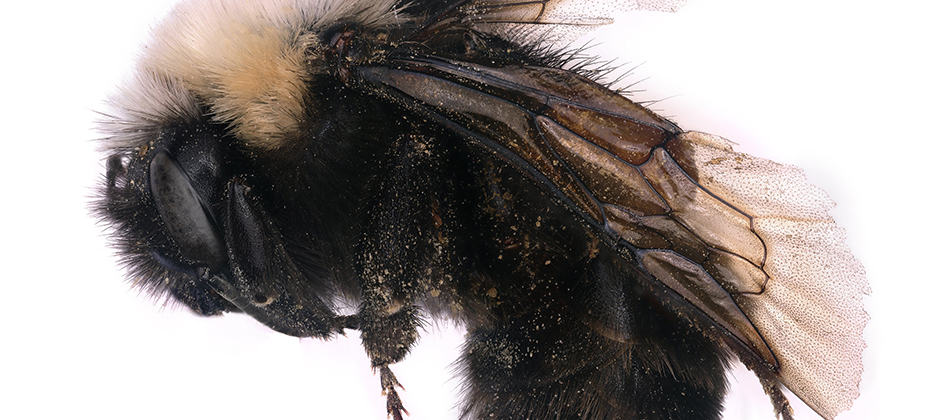Share this article
Bee library to map DNA for 100 species
Researchers are collaborating to sequence genomes for as many bee species in the United States as they can, including many that are facing declines. The project, dubbed Beenome100, will be made public for other researchers interested in learning more about what these genomes can tell them.
Jay Evans, a research scientist with the USDA Beltsville Agricultural Research Center Bee Research Laboratory in Maryland, had been instrumental in getting the honeybee genome sequenced about 20 years ago. The European bumblebee was sequenced a bit later. But there are still about 4,000 bee species in the U.S. that researchers don’t know much about, Evans figured.
“There’s great incentive to understand some of those 4,000 species just to know their behavior and natural histories,” he said. “But there’s also some practical insights, like to know how we can gauge their vulnerability to different parasites.”
Genomes can also tell researchers more about how some species are responding to climate change or diseases, Evans said.
He teamed up with about 40 other researchers to try to collect bees and sequence as many genomes as possible to create a library for future research. This expansive effort was possible thanks to the shrinking cost of genomics. “It’s so efficient now,” Evans said. “We’ve gone from sequencing honeybee DNA on the low end at $6 million, and now we’re doing genomes at $5,000.”
The team has reached out to universities and other researchers to collect bee specimens for 100 species across the country. That requires some strict protocols and a good freezer or some liquid nitrogen.
“To keep the DNA as unfragmented as possible, the way to do that is to get a specimen and immediately freeze it,” said Michael Branstetter, research entomologist with the USDA’s Agricultural Research Service’s Pollinating Insects Unit in Logan, Utah. He recently returned from a trip to southern Arizona with frozen specimens from 80 species.
The researchers hope the genomes will at least provide baseline data about variations in the bees’ genetics. But they also hope they can provide some insight into bee health and how best to conserve declining species.
The genome library can also be used to reference samples collected from environmental DNA. Some bee species, like the Franklin’s bumblebee (Bombus franklini), are considered extinct because they haven’t been observed in the wild for over 20 years. “But that doesn’t necessarily mean they are actually extinct,” Branstetter said. By swabbing flowers, researchers would be able to determine what bees have pollinated them by matching the DNA they find with what’s in the genome library. For the Franklin’s bumblebee, the researchers sequenced the DNA of a museum sample and are using eDNA to look for it in the field. “With this approach, you can monitor or detect species without seeing or killing them,” Branstetter said.
A similar USDA project is collecting genomics information for insect pests.
For the researchers, learning more about bees isn’t just important for the sake of biodiversity. Humans rely on bees to pollinate plants that produce the food we eat. As more species are added to Beenome100, Branstetter said, he hopes researchers “come up with new ways to help protect and conserve them.”
Header Image: The Beenome100 project is sequencing the genomes of bees in the U.S., including the Franklin’s bumblebee, a species believed to be extinct. Image Credit: Colleen Meidt, ARS-USDA








